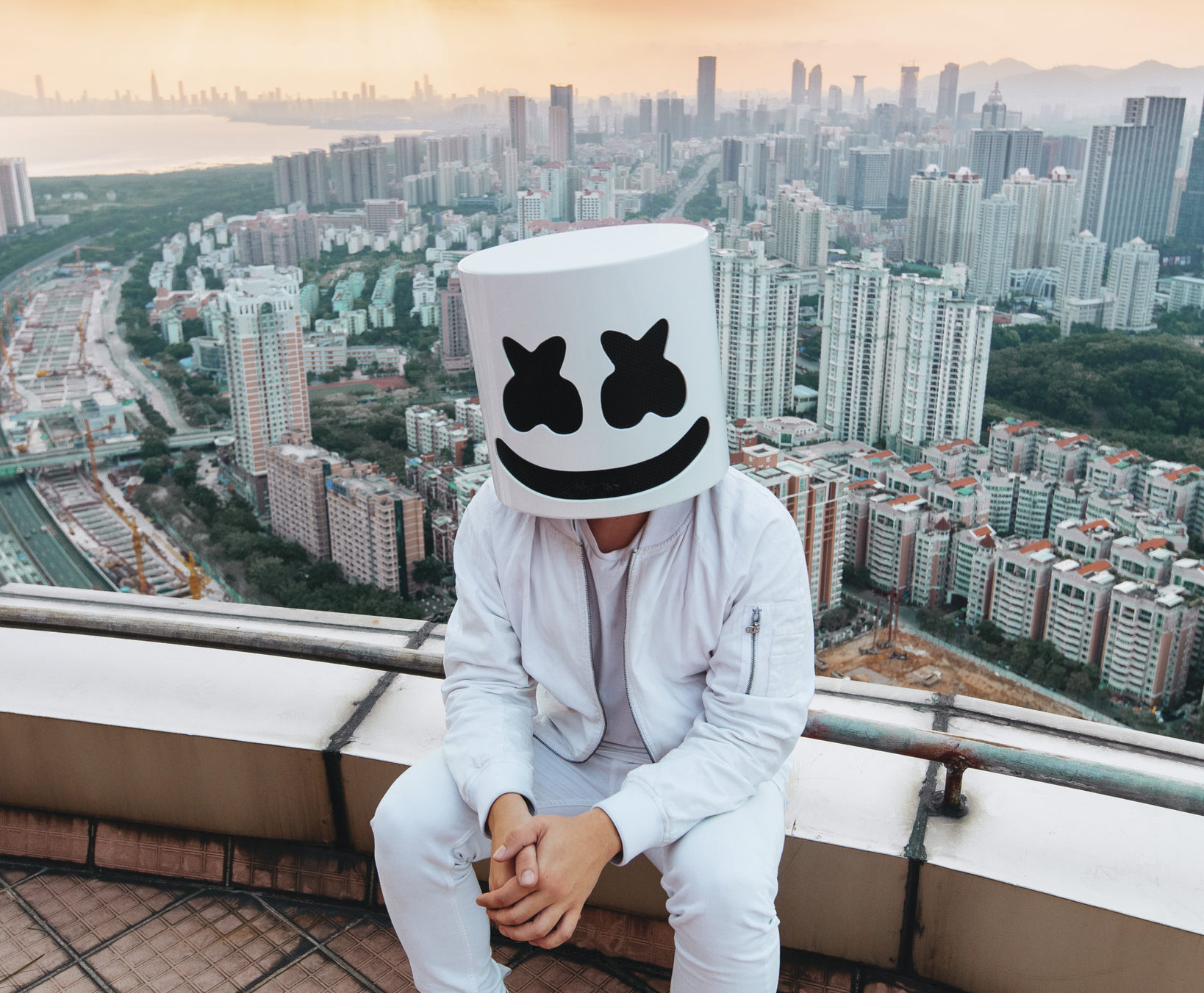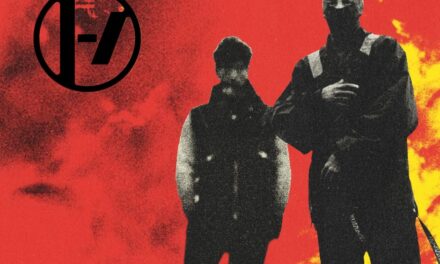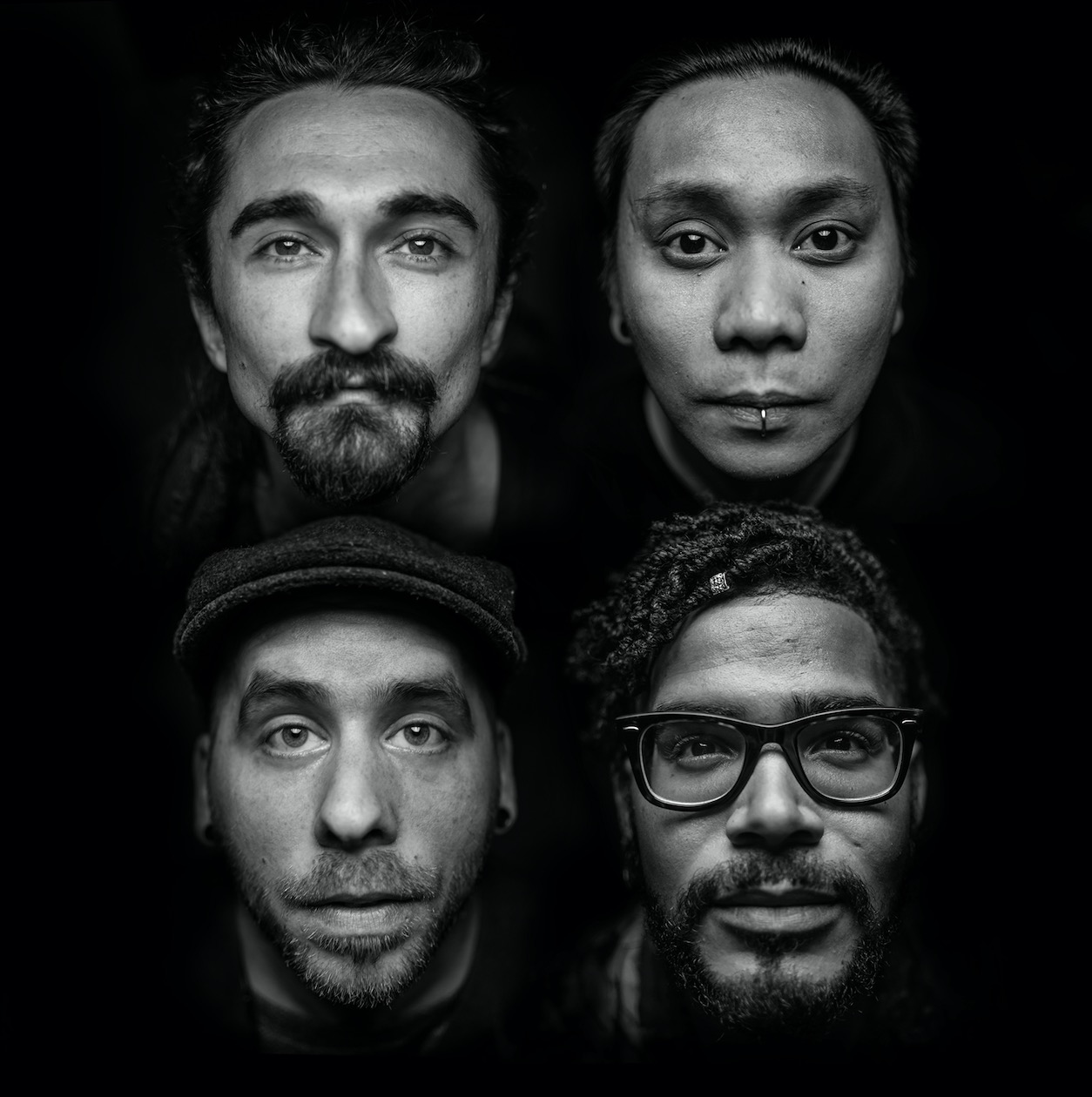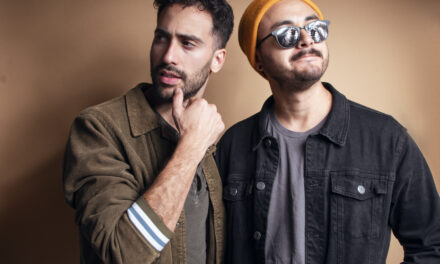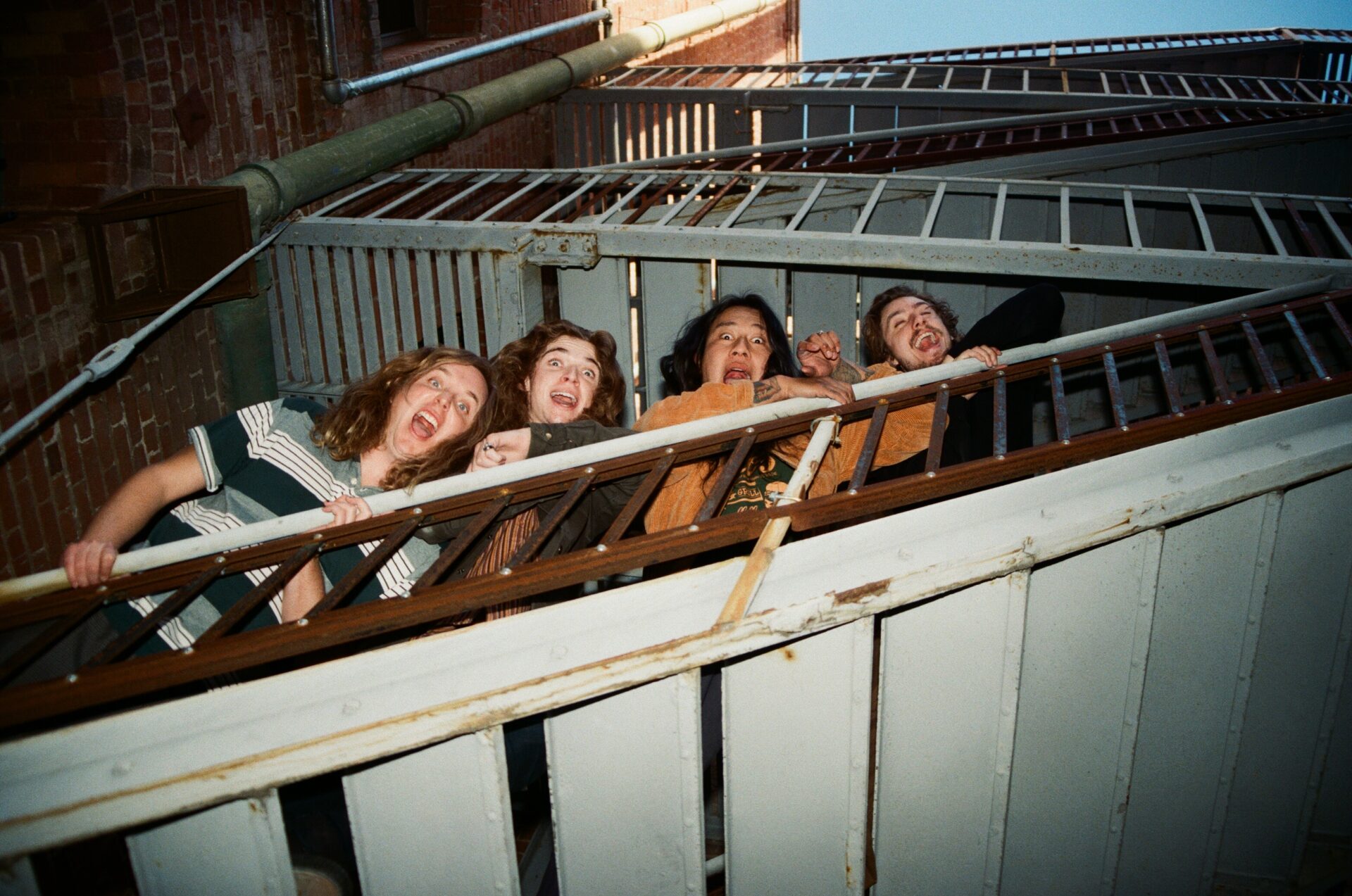One of the first things the Substream team sees when arriving to Prime Music Festival in Lansing is a story in itself. It’s 7:40 at night, and the sun has just begun to set over Michigan’s capitol city. As we walk over the bridge that serves as a gateway to the event, we see a father in his 30s accompanying two children, no older than 10 years old, wearing snow-white sweatshirts with a distinct smiley face drawn on the front. There are two Xs where the eyes should be and a big, albeit crooked, smile. Nearby, a coed in a white onesie and matching boots has constructed the same symbol out of duct tape, only this time the eyes double as pasties for her see-thru outfit.
Any person in touch with the world of EDM today knows this design to be the signature of Marshmello, the latest electronic artist to successfully transition to a full-blown pop sensation. The mystery of Marshmello is part of his brand. To assume anything about the person under the helmet is a mistake. Marshmello is all of us, if anyone. He is the embodiment of the escapism we all seek through music, a hub for those ready to shake off the worries of the world and step into the light. In the case of tonight’s performance, that light includes an instance when a visual, projected on screens no less than 20 feet tall, shows Marshmello shooting beams from his eyes, bathing the audience in rainbow light. It’s a moment that happens within a minute or two of the evening’s performance, but it’s enough to set the tone for everything that will follow. This is a happy place, and Marshmello is here to ensure the audience enjoys it.
Prime is the latest in a string of festival appearances that has stretched throughout the last two years for Marshmello. Like all EDM headliners, however, Marshmello is rarely at any one event for very long. He and his team typically arrive within two hours of his performance and leave almost immediately after, often making just enough time for a quick meet and greet before taking the stage. Tonight is no different, with the festival’s head of publicity texting us just over an hour before Marshmello is set to perform in order usher us backstage.
We first meet Marshmello inside a small trailer located just feet away from the main stage. Though he has only been on site for roughly 15 minutes, he is already dressed in all white and wearing his signature helmet while seated on a couch. A few friends and team members stand nearby, each with their face buried in their phone while waiting on the festival wifi to connect in order to refresh their various feeds. This is not the case with Marshmello, who appears to have been waiting for us to enter. He’s calm and collected, not speaking to anyone. We shake hands and make simple introductions, but before we go any further, his team steps in to once more go over the parameters of our coverage. No audio will be allowed, so there can be no direct quotes, and we should try to get any photos we need as soon as possible. “This is for a cover story,” Marshmello’s manager informs the masked entertainer, who replies by asking how such a thing will work without having an interview component. “They’ll make it work,” the manager replies, glancing at me for confirmation. “Sure,” I reply. “We’ll make it work.”
There is something surreal about finding yourself seated across from a person wearing a mask that depicts his eyes are two black holes that seem to absorb all light and let nothing shine through. If he never spoke, you would never know anything about the person inside because there is nothing to see. Like a mascot for your favorite team, Marshmello is whatever you need him to be at that moment, as long as that thing you need is in some way connected to happiness. It’s jarring at first, as staring into those two black eyes often feels akin to staring into the void we all ignore in our subconscious, but after a moment, that sensation turns to comfort. The reasons for this transition are not entirely clear, but one imagines it has to do with the cartoonish smile just below the eyes that conveys a quiet understanding that everything is okay, or that it will be soon enough.
The trailer is no more than eight feet wide, which when filled with two couches positioned opposite one another makes it so that our knees are knocking as we begin our time together. Substream photographer Ben Howell leaps into action while small talk is made about the show, the weather, and the general state of things in the world of Marshmello. Every response given is short, but not because Marshmello has no interest in the conversation. To speak, the person inside lifts the helmet ever so slightly so he can be heard clearly while still remaining anonymous. He tells me about his recent string of festival performances, which has been ongoing throughout 2017, and for a minute, he contemplates where, if anywhere, felt the most unique. Marshmello says every stop has been memorable for numerous reasons, the least of which seems to be the fact that his profile continues to rise with each performance. I want to press further, hoping to gain some insight that I can translate without needing to quote, but before we can speak further, one of many guests who will appear during our time together makes their introduction.
First in the door is Joyryde, a fast-rising DJ from the U.K. who just finished performing moments before he entered the trailer. He greets Marshmello in a way that tells you they are old friends, and Marshmello, still very much in character, nods back. Joyryde commands the room with stories from the road until blackbear, another festival artist, walks in and joins conversation. He tells us he tried on Marshmello’s helmet moments prior to our arrival and now feels as though his neck is sore. Marshmello, chuckling, nods in agreement. I can’t help asking how much the apparatus weighs, but no one seems to know. “At least 10 or 12 pounds,” blackbear tells us. “But it’s probably even more. How much does a human head weigh? I only ask because it’s like having a second head on your shoulders.” The conversation slowly transitions back to industry discussion, as it seems everyone is working on something new that they wish to tell the others about. Marshmello rarely speaks, but, somehow, he remains the focus of the room. There may be eight or nine people crammed into this tiny trailer, and every single one is watching the man in the helmet.
Moments later, the door swings open once more, and one of Marshmello’s team members informs us that the time has come to meet a group of fans who won a contest held by the festival. Marshmello stands, rolling his head a few times to get comfortable, and bursts through the door with his arms in the air as though he just won the lottery. The conversations being held by those waiting in line fall silent as everyone reaches for their phones, each doing their best to turn on their camera flash and use it before the moment is gone forever. Some succeed far more than others, but even those with blurry shots can be seen trying to upload their image to their favorite social media platform. It’s clear this is a moment everyone in line has been waiting on for quite some time. So much so, that even Marshmello cannot help commenting on how excited everyone appears to be in the seconds before he fully dedicates his attention to those gathered in front of him.
As the photos and handshakes commence, a flurry of camera flashes give light to an otherwise dark area. A couple at the back of the line commands attention because they have brought their own Marshmello helmets, which they are offering to make for the people standing in front of them as they wait. The male-half of the pair, a young man named Tyler, tells me about his creation and quickly informs me they are not the only helmets he has made. “I make them for the community,” he says. “They take two to three weeks max.” He goes on to explain how there are many variations of the helmet, including one that he believes to be indiscernible from the one Marshmello wears on stage. “It only took me three months to figure it out,” he says with a smile on his face. “I had to learn a thing or two about wiring and electricity, but it was worth it.” Marshmello seems to agree, as he stops his photo shoot with Tyler to ask about his helmet and thank him for the extra effort.
It’s in this moment that the power of Marshmello’s music becomes crystal clear. From the faces in line at the meet and greet to those like the father whose children came dressed in custom Marshmello merchandise, the only similarity anyone seems to share is their love for the positivity conveyed through Marshmello’s music. It’s a specific strain of audio bliss, distilled seemingly from pure joy, that gives those who enjoy such sounds an immense sense of positivity so strong that they actively seek out others who enjoy the same thing and together form a global community of fans known as the Mellogang. Their mission is to spread joy. And just like their helmet-wearing leader, they will do so through any means necessary.
Marshmello’s ability to transcend traditional demographics and appeal to all ages is perhaps his most unique and important gift. Through music, Marshmello has been able to touch the lives of people who may have otherwise never been exposed to electronic music, or at least never taken it as seriously as they now do. One fan, who asked to remain anonymous, wrote Marshmello not long after Prime was over to express how their music had helped them overcome tough times in life:
“Hey, I know you’re probably never gonna see this but it’s worth a shot. I just wanna say that I am absolutely in love with your work, your music makes my day a million times better, especially the last few months which have been quite hard and stressful. So thank you for making such great songs, I hope you know how much your music helps people that are going through rough times in their lives! Love you so so so much xoxo”
Dozens of letters like the one above are sent daily to Marshmello’s inbox, and every single one is read.
As the meet and greet ends, the lights from the nearby stage illuminate as one of the night’s other acts, Migos, take the stage to rapturous applause. No one on the grounds is aware of this at the moment, including Substream, but before the end of 2017, Marshmello and Migos will collaborate on a song titled “Danger” for the soundtrack to David Ayer’s Will Smith-lead Netflix exclusive film, Bright. For now, their relationship appears to be little more than that of two artists who respect one another, which is made clear when Marshmello walks within eyesight of the stage and begins dancing with his arms in the air as the rap group’s debut single, “Hannah Montana,” blares through the festival speakers. It’s the kind of moment that one might imagine to be constructed purely for the visual it creates—that of a person wearing a bright white helmet dancing with zero regard for anyone’s opinion of their behavior—but it was undeniably pure. Though his face couldn’t be seen, there was no discounting the fact Marshmello enjoyed what was happening, especially after he was joined in dancing by blackbear after he too wandered over to catch a glance at the “Bad And Boujee” hitmakers.
Before we can join Marshmello in watching Migos, his personal photographer catches his attention and points to an inflatable swan positioned in between two artist trailers. Without hesitation, Marshmello dashes to the pool toy and pounces on it, posing for a series of rapid fire photographs that find him constantly repositioning himself in hopes of finding the one shot that will later appear in his feeds. It’s a fascinating sight because it’s clear these moments happen often, if not daily. The Marshmello brand is one well understood by everyone involved in it, and in moments like these, we are granted a front row seat to watching the gears turn. Marshmello understands his image is everything, especially when his voice is not known to most, and he takes every opportunity afforded to him to capture moments that might make for great sharable content in the future.
When the photoshoot ends, Marshmello tells his team he needs to prepare for his upcoming performance. There are only 20 minutes left until he is due on stage, and in order to get ready, Marshmello needs quiet. He and his team hustle back into their trailer, closing and locking the door behind them before we can follow. Marshmello is not seen again until his call time, and even then, we do not interact. As soon as he emerges from the trailer, Mashmello’s focus is squarely on the audience awaiting his arrival, and from that point forward, all that matters is making those people feel as good as they made him feel by simply showing up.
The evening’s performance goes off without a hitch, leaving the thousands gathered panting to catch their breath as the warm air of another late summer night greets their walk to the parking lot. There are smiles plastered on everyone’s face, with many commenting on how they had never been to a show quite like the one they had just witnessed. It’s clear this was the first electronic show for many, but it likely won’t be the last. “I’ve never had that much fun in my entire life,” one young woman wearing body glitter as clothing can be heard saying to her friends at a volume that suggests her hearing is temporarily damaged. “This was the best night ever.” It may have been a night like any other for Marshmello, but for those in the crowd, this evening would likely be a highlight for their entire year.
Leaving the Prime Festival grounds that night the Substream team felt we had witnessed something special, but nothing could prepare us—or Marshmello—for what would happen next. As we began to work on this story, Marshmello’s collaboration with Khalid, the infectious song “Silence,” became an international sensation. In a matter of weeks, the song charted higher than anything either artist had previously released, which, in turn, made the track a staple of every pop playlist on every major streaming service. “Silence” would go on to reach earn more than 250 million plays on Spotify alone before the end of the year, with hundreds of millions more plays coming from Apple Music, YouTube and beyond.
As great as those numbers are, one gets the feeling the true sign of success for Marshmello lies in seeing how fans relate to the material. Where his earlier tracks were known to be short on lyrics, “Silence” was a far more traditional song in that it featured two verses and a chorus. The song spoke to the battle one faces in trying to overcome their demons in order to have healthy relationships with others, which speaks volumes to a culture just now waking up to the realities of our global mental health crisis. It also offers hope for those struggling, commanding them to break the silence that has left them feeling trapped and embrace the possibilities of life on full volume.
In many ways, “Silence” is the best version of the message Marshmello has been promoting since day one. Songs like “Alone” and “Moving On,” which established his presence in electronic music, spoke to the feeling of isolation that only love can mend. The problem is, as Marshmello has repeatedly explained through videos and sound, that love is a road that goes both ways and each party must be willing to commit to the other if they are ever to go anywhere in their emotional journey together. Marshmello wants you to know it’s not enough to cling to the love offered because you, like everyone else, are worthy of more than the bare minimum. You deserve it, in fact, but none of that matters if you do not first believe it yourself.
Marshmello further revealed himself to the world last October when he surprised fans with the song “You & Me,” the first offering to feature his actual singing voice. Where “Alone” and similar tracks had featured his vocals as well, the pitch-shifting technique used to manipulate the material made his voice virtually unrecognizable. “You & Me” gave fans unfiltered Marshmello backed by hand claps and electric guitars. The song was never meant for radio, but rather to ensure longtime fans that he had not abandoned the scene and audience who originally lifted him into the spotlight. This was Marshmello reconnecting with his fanbase, and they responded by further supporting their masked hero.
In November, following weeks of promotion involving a series of videos posted to social media featuring Marshmello and Selena Gomez, the song “Wolves” debuted online. It was the closest thing to a traditional top 40 dance song Marhsmello had released to date, meaning it featured a known pop star singing uplifting lyrics about love and strength over club-ready production. It’s not all that different from similarly constructed songs that have dominated radio in recent years from acts such as Zedd, The Chainsmokers, or Martin Garrix, yet there was something to the music itself that only Marshmello could deliver. That element is hard to describe however, as it is one of those intangible things that cannot be forced or manufactured. It’s the same thing that makes every Marshmello song stand out—an innate sense of happiness bundled in feelings of uncertainty and loneliness that is delivered in such a way that it feels instantly relatable to the vast majority of today’s music fans. “Wolves” is perhaps the finest example of this gift so far, and it shows in the song’s continued success both online and at terrestrial radio worldwide.
The arrival of the new year presents a new challenge for Marshmello. The success he earned through his nonstop schedule over the last 12 months has placed him amongst the music elite, a place very few artists ever reach. While attaining this position is no doubt something to take great pride in, Marshmello is now faced with the task of holding his standing in music’s upper echelon for as long as possible. The ongoing success of both “Silence” and “Wolves” has proven he is more than a one-hit wonder, but whether or not a single great year can be turned into a decades-long career remains to be seen. Marshmello has no plans for a new album in 2018, but he does plan to continue releasing singles while heavily touring the world. His first headlining dates will take him to New York City, San Francisco and Detroit, but those are just the first of dozens of dates that will be revealed.
Amidst all the uncertainty regarding his future, there is one thing that remains clear, and that is the fact that there are millions of Mellogang members around the world who believe in the man behind the mask. They have each heard his call and have chosen to join the ranks of people who yearn to find happiness in this often chaotic world. With each new single, Marshmello grows his international following, and they, in turn, recruit the people in their individual lives. These actions create a global support system that not only promotes Marshmello’s music, but also the messages of hope and strength that lie at the core of his art. His fans may never know his true identity, but to be perfectly honest, it does not really matter in the grand scheme of life. Marshmello’s fans know his heart, and that matters far more than any name ever could.
A version of this interview ran in the current print issue of Substream Magazine

